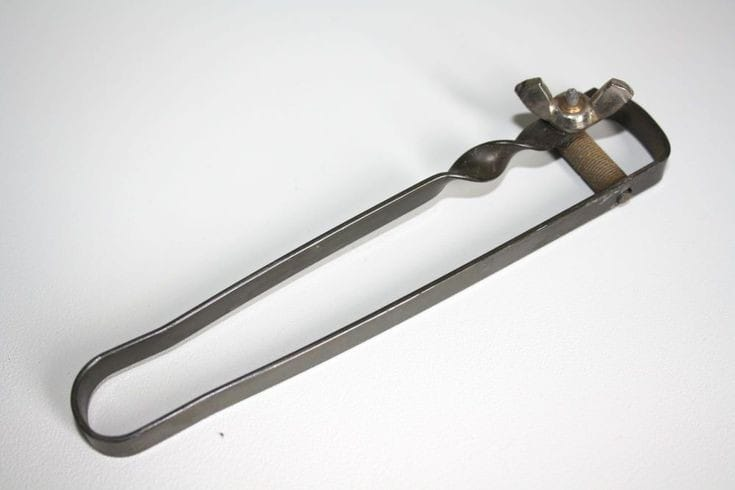At first glance, this rugged, utilitarian device might seem like a relic from an industrial workshop. Perhaps it was tucked away in a toolbox or perched on a welding bench. If it sparks a hint of familiarity, you might recognize it as a gas lighter from the GDR (German Democratic Republic), a tool once indispensable to welders and craftsmen. More than just a striker for acetylene torches, this seemingly simple tool holds a fascinating story about ingenuity, resilience, and a bygone era.
A Glimpse into the Past: The Gas Lighter’s Role
In the industrial landscapes of the GDR, tools like this gas lighter were essential. Its primary purpose was straightforward—igniting acetylene gas used in welding and metalwork. Yet, its story goes far beyond its function. It represents the industrial culture of the GDR, where efficiency, durability, and practicality were celebrated.

This lighter was a staple in workshops, factories, and even small repair shops. Workers across industries relied on its dependable spark to power the tools of their trade, making it a symbol of craftsmanship and labor.
How This Ingenious Tool Worked
The brilliance of this gas lighter lay in its simplicity. No batteries, no fuel tanks, just a practical design that delivered consistent results. Here’s how it worked:
- The Flint-and-Steel Mechanism: A steel spiral acted as the striker, rotating against a flint when the handle was squeezed. This generated a shower of sparks.
- Igniting the Torch: The sparks from the flint lit the acetylene gas flowing from a torch nozzle, producing the flame required for welding or cutting metal.
- Built for Durability: Constructed from sturdy steel, it could endure the demanding conditions of industrial workshops without faltering.
The design was so effective that even decades later, these lighters remain functional—a testament to their quality and craftsmanship.
The GDR’s Industrial Backbone
The German Democratic Republic, established post-World War II, placed immense focus on heavy industry and collective labor. Factories were the lifeblood of the economy, producing everything from machinery to tools that supported industrial growth. In this environment, practical tools like the gas lighter thrived.
During the mid-20th century, acetylene torches were vital for construction, repair, and manufacturing. Tools like this lighter weren’t just accessories; they were essential for daily operations. They reflected the GDR’s ethos of resourcefulness—reliable, unadorned, and built to last.
Workshops and the Rhythm of the Spark
The gas lighter was a constant presence in GDR workshops, where metalworkers, mechanics, and welders relied on its spark to start their tasks. Each pull of the lever marked the beginning of another project, whether it was cutting steel beams, welding pipes, or crafting components.
- For Welders: It was the first step in igniting acetylene torches, a tool of choice for joining metals or cutting through thick sheets.
- For Mechanics: Acetylene torches helped loosen stubborn bolts and shape metal parts, and the gas lighter was indispensable for firing them up.
- For Craftsmen: Even smaller-scale operations, such as bicycle repairs or custom part manufacturing, depended on this handy tool.
This lighter wasn’t just a tool—it became part of the rhythm of work, an unsung hero in the symphony of industry.
A Nostalgic Connection to the Past
For many who lived and worked in the GDR, the gas lighter evokes a sense of nostalgia. It’s a reminder of long hours in bustling factories, the smell of hot metal, and the camaraderie shared among coworkers. These tools often carried sentimental value, passed down from one generation of workers to the next.
In small towns and rural areas, workshops were central to the community. The lighter was more than a utility—it was part of the shared experience of labor and creativity. Watching sparks fly from its flint became a common sight, an emblem of the industrious spirit of the time.
The Decline and Resurgence of Classic Tools
As technology advanced, the need for traditional tools like the gas lighter began to wane. Modern welding torches with built-in igniters replaced manual options, and battery-operated lighters offered more convenience. By the late 20th century, these once-essential tools had become less common.
However, their legacy endures. Vintage enthusiasts and collectors have rediscovered these lighters, appreciating them for their historical significance and craftsmanship. They’re not just relics—they’re artifacts of an era that valued durability and ingenuity.
Why These Lighters Are Still Valued Today
Despite their decline in everyday use, these gas lighters continue to hold relevance. They appeal to different groups for various reasons:
- Collectors’ Items: Vintage gas lighters are sought-after collectibles, prized for their design, functionality, and historical value.
- Practicality: Some craftsmen and hobbyists still use these lighters, trusting their durability and simplicity over modern alternatives.
- Symbolism: For many, these lighters represent a time when tools were built to last and served as a testament to human ingenuity and resourcefulness.
Caring for a Classic
If you own one of these gas lighters, preserving it ensures it remains a functional piece of history. Here are a few tips to maintain its condition:
- Keep It Clean: Remove debris or rust from the striker and flint area to maintain smooth operation.
- Prevent Rust: Store the lighter in a dry environment and consider applying a light coat of oil to protect the metal.
- Replace the Flint: If the sparks become weak, replacing the flint can restore its functionality.
A Timeless Spark of Ingenuity
This humble gas lighter is more than a tool—it’s a symbol of resilience, creativity, and the industrious spirit of the GDR. Its sparks lit more than just torches; they ignited an era of hard work and innovation.
For those who remember its heyday, it’s a nostalgic reminder of a world where tools were designed with purpose and care. For younger generations, it offers a glimpse into a time when simplicity and durability defined craftsmanship. Whether displayed as a collectible or used in a workshop, this gas lighter continues to inspire awe and admiration.
Conclusion: The Spark That Endures
Do you remember what this is? If you do, you’ve likely witnessed its spark in action or heard stories of its importance. The gas lighter is more than a functional device—it’s a connection to history, a relic of an industrious age that prioritized practicality and durability. Its legacy lives on, proving that even the smallest tools can leave the brightest marks on our past.


